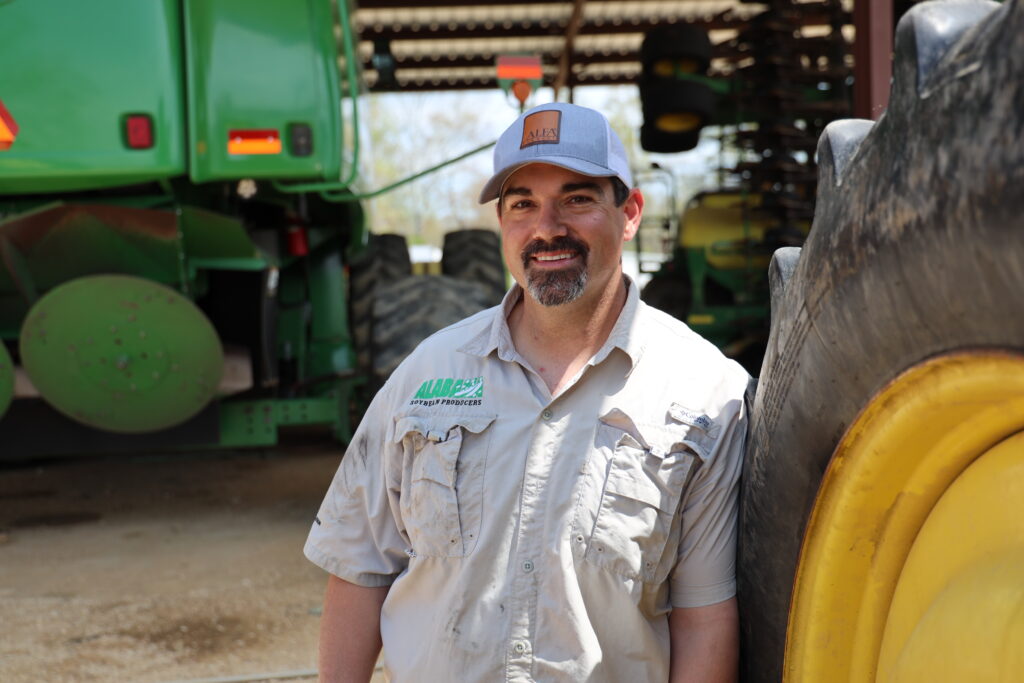Prospective Planting Report Calls for More Cotton, Less Corn

By Maggie Edwards
Alabama row crop fields could see an increase in cotton-covered acres this spring.
The Cotton State is projected to plant 430,000 acres of the fiber, according to the U.S. Department of Agriculture National Agricultural Statistics Service (USDA NASS) Prospective Planting Report released March 28. The report is an estimate based on farmer conversations and interviews.
Cotton acreage is forecast to jump 13% from 2023 and follows a national trend. U.S. cotton acres are predicted to be up 4%.
Alabama Cooperative Extension System’s Steve Brown said the increase could result from the successful cotton harvest north Alabama had last fall.
“The futures market puts cotton in a more favorable advantage than feed grains,” said Brown, who specializes in cotton production and management. “The cost of growing corn from a fertilizer standpoint caused a tilt toward cotton for many.”
Take DeKalb County’s Ben Johnson. He decided in February to switch most of his farm’s corn acreage to cotton.
“I continually run numbers,” said Johnson, who serves on the Alabama Farmers Federation State Soybean Committee. “Looking at revenue protection from insurance and county yields, it’s a no brainer for us. We must use the best protection we can get to guarantee we can do this again next year.”
Transportation cost factors in, too.
“Transporting grains is higher than cotton,” Johnson said. “We also don’t have to store the cotton here on the farm like we do corn. It’s less expensive to add cotton than build another grain bin.”

Johnson still has his hand in corn, soybeans and wheat, though those acres are down.
That also follows a national trend. Wheat and feed grain acres are reported to decline, said the Federation’s Carla Hornady.
“Rising input costs put pressure on production and profit margins,” said Hornady, director of the Federation’s Cotton, Soybean and Wheat & Feed Grain divisions. “The economy matters. It plays a big role in what farmers plant.”
Alabama corn is forecast to drop 6% to 310,000 acres compared to 2023, while soybeans are expected to decline 9% to 320,000 acres.
Winter wheat is at a 34% decrease. That’s likely due to a late fall drought, Brown said.
“It’s hard to get an extent of a fall-planted crop,” Brown said. “A lot of wheat is rotated with soybeans. Soybeans being down could be a result of that, too.”
Meanwhile, peanut farmers are optimistic looking toward planting. The official state legume is expected to take a 3% leap in planted acreage, though Baldwin County farmer Tim Mullek said the acreage might increase even more. Despite overall increases across Alabama, individual farms could be confined to their crop rotation.
“Our farm is different and is going to be slightly down in peanuts,” said Mullek, a member of the Federation State Cotton Committee. “That isn’t from an economic standpoint. It’s just how our rotation fell.”
Mullek also grows cotton, corn, soybeans and wheat.
“We aren’t grossly increasing our cotton over corn,” Mullek said. “We put our corn on the best acres we have to give it a chance.”
No matter what farmers plant, the tough farm economy is taking a toll, Mullek said.
“Farmers need help from the farm bill,” Mullek added. “Inputs change everything. There’s nothing wrong with $4 corn if fertilizer is $200 a ton. But it’s $500. There’s nothing wrong with 85-cent cotton if cotton seed is $300 a bag. The problem is it’s $600 a bag. The list goes on.”
Farmers are subject to forces outside their control, but Johnson and Mullek stay strong to keep feeding and clothing the world.
“Without faith, I would be in despair,” Mullek said. “It doesn’t make it easy, but it makes it possible. I am thankful to farm no matter what.”
